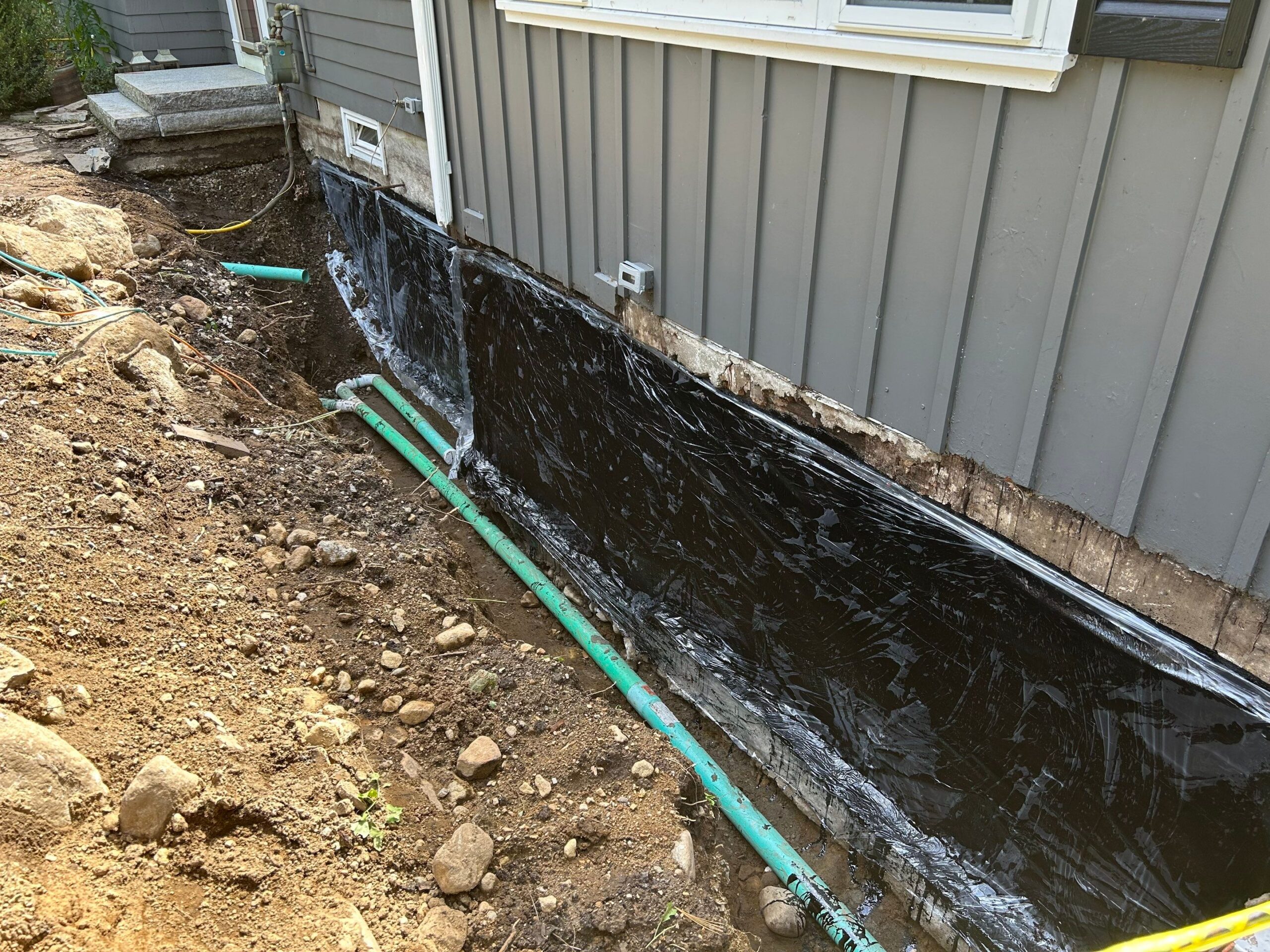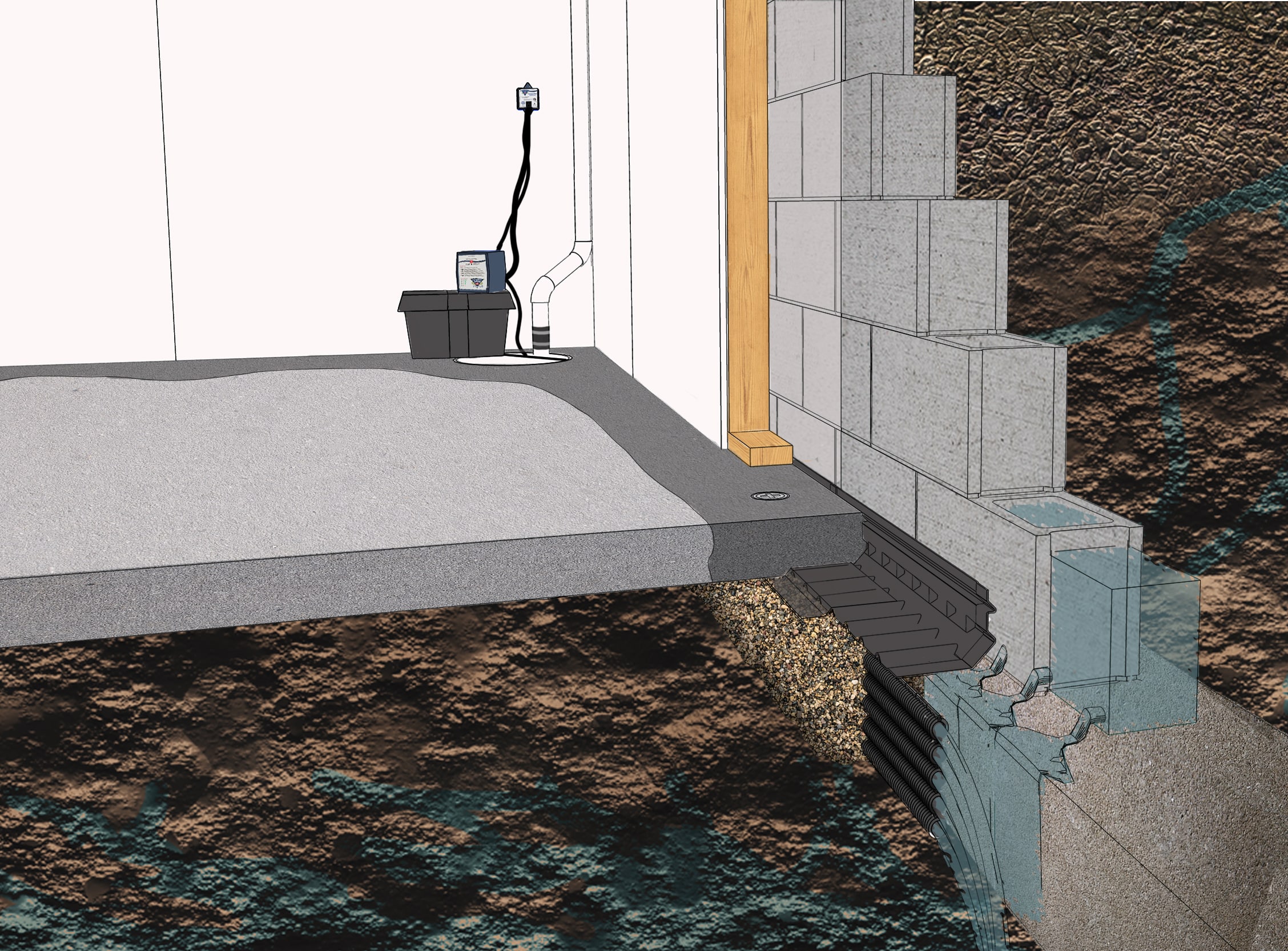Recognizing the Value of Structure Waterproofing for Long-Lasting Structural Stability
In the realm of residential or commercial property upkeep, structure waterproofing stands as a critical consider guarding architectural integrity. While usually forgotten, the dangers postured by water intrusion can bring about expensive and considerable damages that threatens the very structure of a structure. Recognizing the nuances of waterproofing can disclose how it functions as a critical defense system against these risks. Nonetheless, the advantages extend beyond simple security, affecting aspects such as building worth and interior health. What techniques properly prevent such problems, and just how does one make certain the right choices are made? These inquiries welcome a much deeper exam.
Threats of Water Breach
Water breach's effect on a structure can be substantial, resulting in a host of prospective troubles that jeopardize the integrity of a structure's foundation. As dampness leaks into the foundation, it can compromise the structural elements, resulting in splits and erosion over time. This seepage not only reduces the structure's toughness however also postures a danger to the entire structure's stability. Consistent water exposure can lead to the growth of mold and mildew and mildew, aggravating health problems for occupants and raising maintenance prices.
In addition, water invasion can add to the damage of structure products. Furthermore, water breach often leads to increased humidity degrees within the structure, which can influence electric systems and various other facilities.
One more considerable danger connected with water invasion is soil instability. Excess wetness can change the structure of the soil surrounding the foundation, resulting in irregular settling and further structural damage - basement crack repair Toronto. Immediately resolving water intrusion is critical to maintaining the long life and safety of any building

Advantages of Waterproofing
Executing foundation waterproofing is a vital step in safeguarding a structure from the damaging results of water breach. One of the primary benefits of waterproofing is the preservation of structural stability. Water infiltration can wear down the foundation, resulting in splits, weakening the overall structure, and potentially resulting in costly repair work. By producing a barrier versus moisture, waterproofing helps maintain the foundation's toughness and longevity in time.
Furthermore, waterproofing dramatically enhances interior air high quality. Wetness seepage can foster mold and mildew and mold growth, which not only damages structure products but also postures wellness dangers to occupants. A properly waterproofed structure lessens these dangers, contributing to a much healthier indoor setting.
Furthermore, waterproofing raises building value. A well-protected foundation is an appealing feature for possible buyers, as it shows positive maintenance and decreases the likelihood of future architectural issues. This investment not just safeguards the current state of the building but also includes long-term worth.
Lastly, structure waterproofing contributes to power effectiveness. By preventing wetness from entering the structure, it helps in keeping consistent indoor temperature levels, hence decreasing the demand for excessive heating or air conditioning and causing power savings.
Typical Waterproofing Approaches
When it comes to safeguarding a building's foundation, selecting the suitable waterproofing technique is critical for reliable protection versus dampness breach. One of the most common methods is the application of liquid waterproofing membranes.
One more widespread approach is the installment of sheet membrane layers, which are pre-formed sheets of water-proof product, often bitumen or polyvinyl chloride (PVC), that are stuck to the structure wall surfaces. These sheets supply durable security and are especially efficient in areas with high groundwater degrees.
Cementitious waterproofing is an additional widely-used remedy, specifically in brand-new constructions. This includes applying a cement-based substance blended with additives to create a look at this website waterproof coating. It is easy to use and cost-efficient, making it a prominent option for domestic buildings.

Signs of Foundation Damage
To preserve the stability of a building's foundation, recognizing explanation the signs of possible damages is as essential as selecting the suitable waterproofing techniques. Timely identification of these indicators can protect against pricey fixings and make certain durable architectural security. Among one of the most obvious indications of foundation damage is the appearance of splits in the wall surfaces, floorings, or foundation itself. These can vary in size and form, yet stair-step or horizontal fractures usually recommend considerable structural issues.
Uneven floorings are an additional typical symptom, generally caused by the settling or changing of the foundation. House owners may additionally notice windows and doors coming to be hard to open up or close, suggesting potential imbalance due to structure motion. Water intrusion indicators, such as dampness, mold and mildew, or mildew in the cellar, suggest insufficient waterproofing or drainage concerns, which can exacerbate structure problems.

Picking the Right Specialist
Choosing the right contractor is vital for ensuring successful structure waterproofing jobs. Begin by looking into potential specialists with a tried and tested track document in foundation waterproofing.
It is vital to get numerous price quotes to contrast prices and extent of job supplied by each specialist. Be careful of quotes that are substantially reduced than my response others, as this may indicate subpar materials or handiwork.
Throughout examinations, examine their communication skills and readiness to address inquiries, which are signs of a specialist's commitment to client complete satisfaction. Ensure they give a thorough agreement describing timelines, guarantees, costs, and products. Validate their understanding of regional building codes and guidelines to prevent prospective compliance concerns. By taking these steps, you can pick a service provider that will provide top quality, long lasting waterproofing services.
Conclusion
Structure waterproofing is necessary for maintaining architectural honesty and preventing potential damages triggered by water intrusion. By applying reliable waterproofing techniques, the risks of mold and mildew development, material wear and tear, and soil instability are significantly lowered.
In the world of residential property maintenance, foundation waterproofing stands as a pivotal variable in protecting structural stability.Executing foundation waterproofing is a crucial action in safeguarding a structure from the harmful results of water breach. One of the most obvious signs of structure damage is the look of cracks in the wall surfaces, floors, or structure itself. Water intrusion indicators, such as dampness, mold and mildew, or mold in the cellar, suggest poor waterproofing or drainage problems, which can aggravate structure troubles.
Foundation waterproofing is essential for preserving architectural stability and avoiding possible damages caused by water breach. - basement leak repair Toronto
 Bradley Pierce Then & Now!
Bradley Pierce Then & Now! Jason J. Richter Then & Now!
Jason J. Richter Then & Now! Danica McKellar Then & Now!
Danica McKellar Then & Now! Dolly Parton Then & Now!
Dolly Parton Then & Now! Pierce Brosnan Then & Now!
Pierce Brosnan Then & Now!